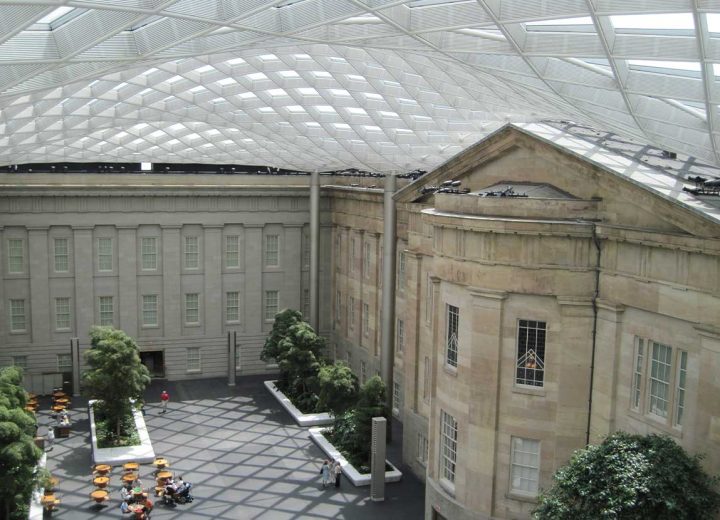Smithsonian Portrait Gallery & American Art Museum
Moisture Intrusion Investigation and Repairs
Built in 1857, the Old Patent Office Building housed scale models of the inventions that were submitted for patent application. Congress transferred the building to the Smithsonian Institution in 1964. After undergoing extensive renovations in 2006-2007, the building, which houses the National Portrait Gallery and the American Art Museum, was renamed The Donald W. Reynolds Center for American Art and Portraiture.
Since the 2007 installation of a canopy over the central courtyard, water infiltration at the canopy perimeter had been a recurrent problem, causing new wood flooring in the Luce Center to cup and bow. Despite multiple investigations and repairs undertaken by the original contractor and the Smithsonian Institution, the problem persisted.
To resolve moisture infiltration conditions for the long term, the Smithsonian Institution retained Hoffmann Architects + Engineers. Beginning with an in-depth investigation into the source and path of the leaks, Hoffmann provided a report outlining the causes of water intrusion and recommending a repair strategy. Our design professionals identified roof leaks as originating primarily at the connection between older standing-seam copper roofing and the newer flat-seam copper roofing associated with the atrium canopy stand-up wall; cracked solder and open joints at flat-seam roofs also contributed to the problem. The investigation further revealed wet and deteriorated roofing at the original gutter, which had led to peeling and blistered interior surface finishes on the walls of the Lincoln Gallery.
Hoffmann provided architectural and engineering services for the full scope of recommended repairs, including preparation of drawings and specifications for roof detailing and leak remediation. To see that rehabilitation work was completed in accordance with the contract documents, Hoffmann’s design professionals were on site to observe construction materials, methods, and workmanship in achieving the desired outcome.
